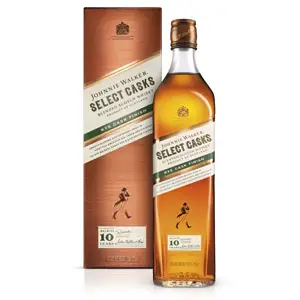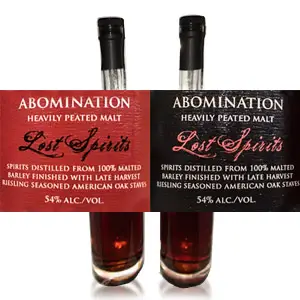A few weeks ago I reviewed Sagamore Spirit’s Rye and I thought pretty highly of it, even though it’s a blend of sourced whiskies from MGP. I was contacted by Liz from Sagamore Spirit’s PR firm to clear up some factual details, and she offered to send me a sample of the Cask Strength Rye. Unfortunately, she was out of samples of young preview whiskey from Sagamore’s newly-built Maryland distillery. While we wait for that liquid to release (the first bottle of own-distilled Sagamore at four years of age should hit shelves in 2021), we can at least enjoy the fruits of Sagamore’s careful blending of contract-distilled MGP juice. As I’ve said before on this blog whilst denigrating producers that use it, MGP makes excellent whiskey.
This is a blend of MGP-distilled straight rye whiskies from two different mash bills at 4 years old. Because these are contract distillations they aren’t just blending tanks of already-aged standard MGP rye, but rather specifying the mash bill and barrel entry proof and waiting for the rye to hit target ages before blending them. The first mash bill is 95% rye and 5% malted barley, and the second unspecified recipe is 51% rye and some combination of corn and malted barley. The result is bottled at cask strength, or close to it (they add a “splash” of Maryland spring water to bring the batch to 56.1% ABV, presumably for consistency). All of Sagamore Spirit’s products are made without added coloring, but they are chill-filtered. My sample bottle – Thanks Liz! – is 56.1% ABV and is from batch 9AA.
Sagamore Spirit is also cask-finishing a number of casks in everything from Cognac to Calvados – here’s my review of the Calvados finish which I bought soon after reviewing the flagship rye. I’m a sucker for Calvados finishes, which are far too rare.
Nose: Cherry syrup with aromatic bitters. The deeper into the glass you go, the more the cherry turns sweet and syrupy, like a cordial. Rye spices (cinnamon, clove) are present but restrained. Almost-astringent wood extracts are prevalent, suggesting heavy oak influence.
Palate: Syrupy body. A strong tongue burn is accompanied by those heavy astringent oak flavors, along with mouth-drying tannins. After the burn, delectable cherry syrup returns, along with walnuts and some molasses-y wood sugars.
Finish: Medium length. The finish is true to the palate, with more of the same. There’s an additional note of balsamic vinegar but no other evolution. Fades without bitterness.
With Water: The addition of several drops of water initially release a pleasant maple sugar note and additional nuttiness (hazelnuts). The water also mutes the nose tickle a bit, making it easier to detect aromas. The palate also becomes silkier, and the burn is muted. I heartily suggest adding water to this. In fact, experiment with various amounts to see how it changes. When I proof it down to approximately 48% and then (important!) give it a brief rest in the glass, the aroma becomes far more floral and fruity, the liquid is easier to taste and has less overpowering oak, and there’s a new stone fruit (peach?) flavor on the tongue. Try it!
Overall: Straight out of the bottle, this seems to be ALL about the oak, with only passing reference to rye. The cherry notes are deep, dark, and very tasty, but there isn’t a lot of complexity otherwise. That said, this is one of the most reactive whiskies I’ve had to various amounts of water. It seems like each additional splash of water reveals different flavors. That’s where the complexity is hidden, you just have to do a little work to unlock it.
Try to find a bottle on sale for $58 which is a totally reasonable price these days for cask-strength rye no matter what the provenance is. The standard retail is closer to $75, which feels a little high to me.








